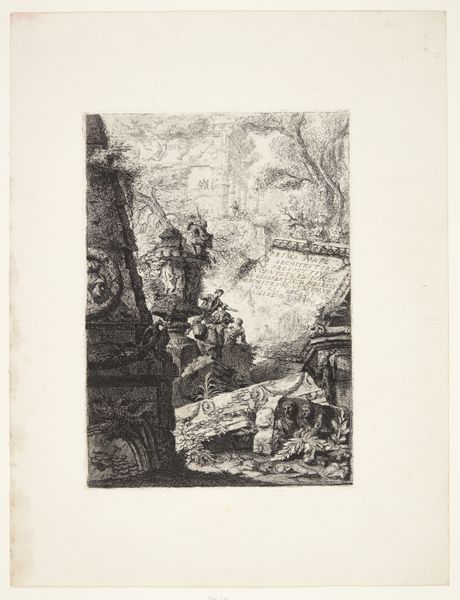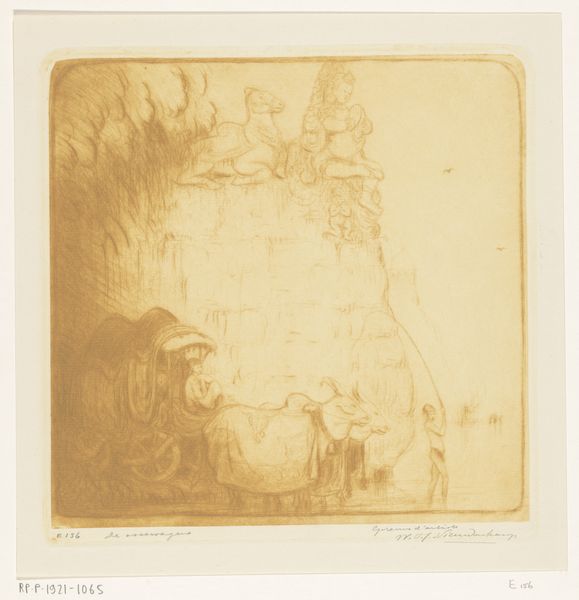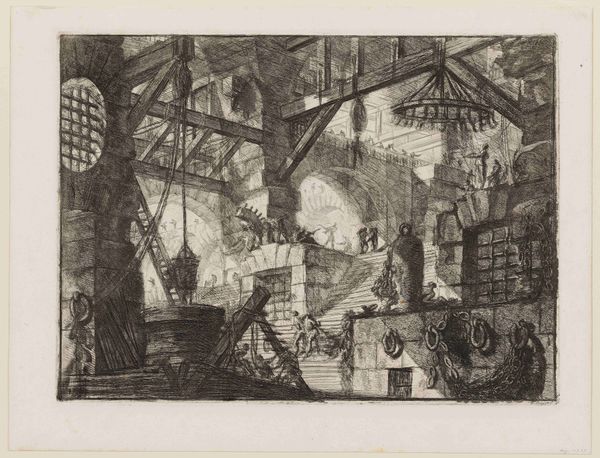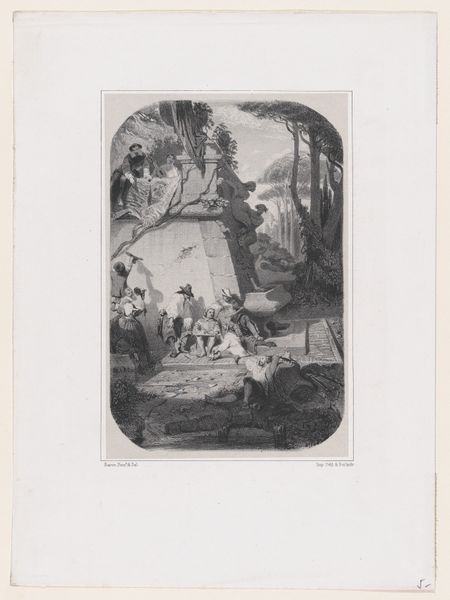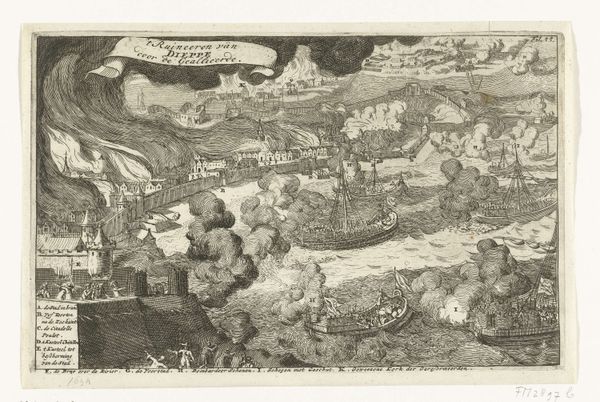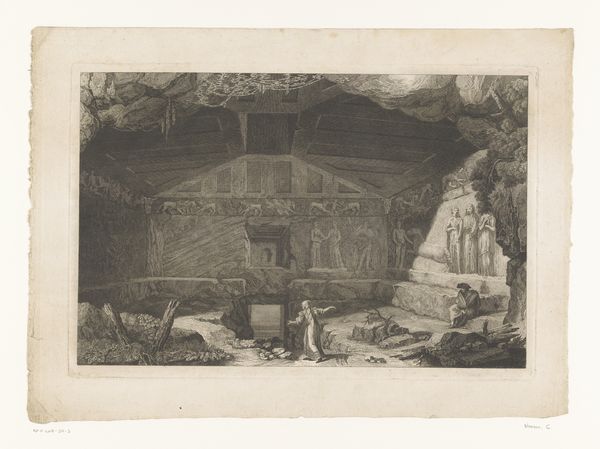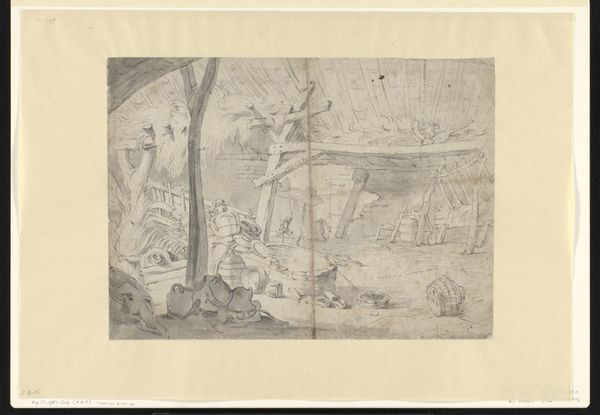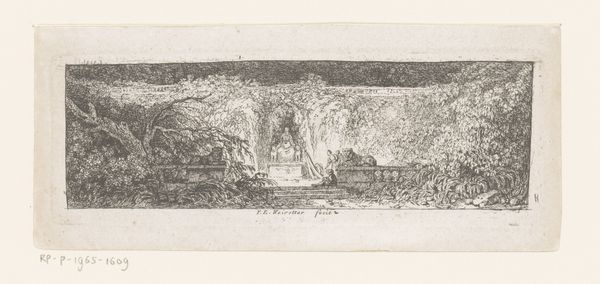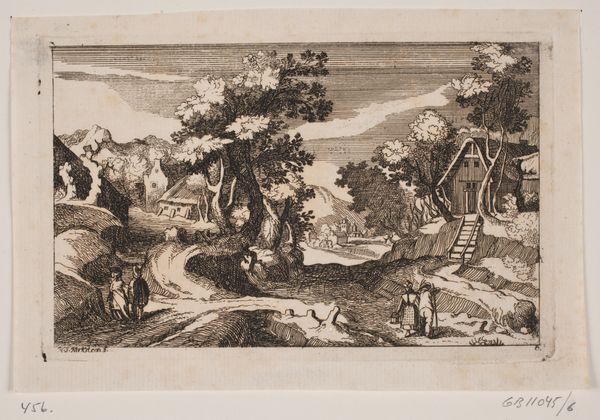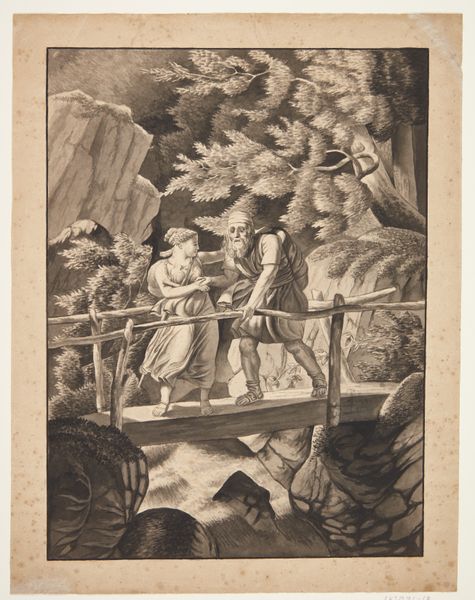
Dimensions: height 261 mm, width 356 mm
Copyright: Rijks Museum: Open Domain
Johann Ferdinand von Hohenberg crafted this architectural capriccio with figures, employing etching to conjure a scene rich in symbolic tension. The crumbling architecture speaks of time's passage, while figures enact dramas that echo through history. Notice the she-wolf, a clear allusion to the Roman myth of Romulus and Remus. A symbol of primal motherhood and fierce protection, we find it across epochs, from ancient Etruscan bronzes to fascist propaganda. Here, the wolf is rendered in the state of decay, as a relic of a lost empire. Consider the emotional weight of ruins themselves. They stir within us a melancholic yearning for a bygone era, reminding us of our own mortality. This scene resonates with a deeper, almost subconscious understanding of decay and transformation. It reflects a collective memory, a shared human experience of loss and the cyclical nature of history. The wolf, the ruins, the figures—they are fragments of a past that continue to haunt our present. The symbol has shape-shifted, but the psychological chord it strikes remains.
Comments
No comments
Be the first to comment and join the conversation on the ultimate creative platform.
